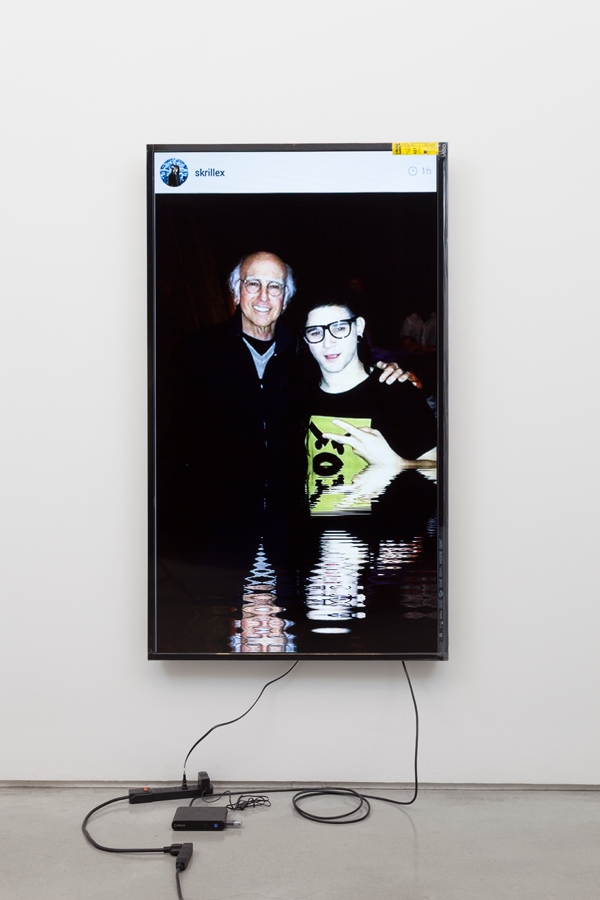What happens when an exhibition does not reflect an artist’s breadth of thinking? In his first New York exhibition in three years, Cory Arcangel shows nine works presented on as many flatscreen televisions, which have been rotated from landscape to portrait format and are accompanied by clutters of cables connecting them to media players. All part of the series Lakes (2013–4), they are each different iterations of the same work: a digital image that the artist transformed using a ‘lake’ Java applet (a small bit of code that gives an effect of a reflection in water, doubling the image in a blurry way). The images – Puff Daddy boarding a jet (Diddy / Lakes, 2013), an Instagram of Larry David and Skrillex (Creative Class / Lakes, 2014), a foot in running shoes against a wood floor (Asshole 2 / Lakes, 2014) – are almost interchangeable in their mix of pop culture and consumer products (there’s also a pair of snazzy sunglasses).
The clunky lake effect makes all of the either hi- or low-res images – culled from the Internet or the artist’s own files – seem uniformly outdated. It’s a look Arcangel excels at, and while visualising obsolescence is an interesting theme for an artist who seems able to overcome any malfunction in old videogames, this series of works does not examine the banal but actually becomes it. (Appropriate, then, that the day I visited Arcangel’s show I saw televisions turned sideways in three other shows.)
Sameness is not always a weakness, but it is here. An exhibition including works that reflect the range of Arcangel’s technological capabilities would better demonstrate the complex ways in which he thinks about technology. Pro Tools, his 2011 solo show at the Whitney Museum of American Art, was just that: it included Arcangel’s now-iconic messing with videogames and a series of prints that tinkered with Photoshop to create colourful abstractions from the software’s gradient tool. They are simple to describe, almost like an elevator pitch (‘just the clouds from Super Mario Bros. moving across the screen!’), but they are also considered pieces that show a sophisticated and witty approach to the optical unconscious of technology.
Could the same be said of Lakes? Maybe. Like the Photoshop prints, Lakes offers a straightforward use of commonplace technology exaggerated for effect. But while earlier works, such as Arcangel’s ‘self-playing’ bowling games, raise questions about the physicality of absence, and the Photoshop prints make direct reference to the history of abstract painting, the Lakes series is a body of works that, like Narcissus looking at his own image in the water, is stuck in the loop of addressing little beyond its own terms of production.
This article was first published in the December 2014 issue.
